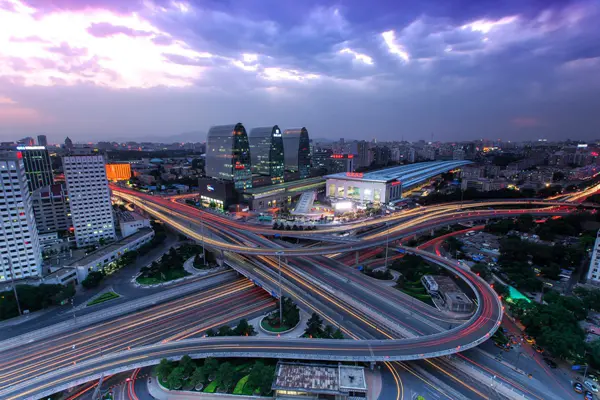In the Beijing of 2020, downtown residents won't need to walk more than ten minutes to reach a subway station and pedestrians will breathe in less car exhaust thanks to green vehicles.
At least, that is the vision presented in a blueprint released by Beijing transportation authorities on Monday, which maps out the capital's transportation development for the next five years. By 2020, the megacity of over 21 million people will extend its 554-km urban rail network to more than 900 km.
Buses will run faster thanks to a 1,000-km bus lane network, and the proportion of new energy buses will exceed 65 percent by 2020.
The city will also encourage bicycling as a greener way to commute, with 3,200 km of bike lanes and at least 100,000 bicycles for rent, according to the plan.
The plan calls for some roads linking Beijing to neighboring Tianjin Municipality and Hebei Province to be integrated into the public transportation system, allowing commuters to travel between the three regions with a single public transportation card.
Beijing will improve the road network in its eastern suburb of Tongzhou, which serves as a "subsidiary administrative center," and improve road conditions in rural districts. Beijing announced last July that it would move some of its city administration out of the city center to Tongzhou District by 2017.
During the next five years, the city also expects cleaner air as infrastructure for new energy cars is upgraded and incentive policies for green automobiles expand.
An Zhiqiang, an official with the Beijing Municipal Commission of Transport, said the plan was created to address the "urban ills" of Beijing, and is expected to relieve problems such as traffic jams and inadequate public transportation.
In recent years, Beijing has taken multiple measures to make itself a more livable city with a greener environment and more convenient transportation.
The city plans to move 15 percent of its population out of the city center and keep the total population below 23 million.
Beijing has made painstaking efforts over the past two years to fight smog, including reducing coal consumption, limiting automobiles use, and controlling dust from construction sites.
During the first five months of this year, the density of PM2.5 particles, a major contributor to pollution, was reduced 19.3 percent year on year. The city had 96 days of sound air quality during the first five months, 21 days more than in the same period last year.
Lu Yan, director of the Beijing Municipal Development and Reform Commission, said it is important to clarify the functions for Beijing's different areas in order to treat the city's urban troubles.
For example, while lowering population density in the city center, the government should also enhance the center's function in political activities, cultural exchange, international communication and scientific innovation, he said.
(APD)
 简体中文
简体中文





